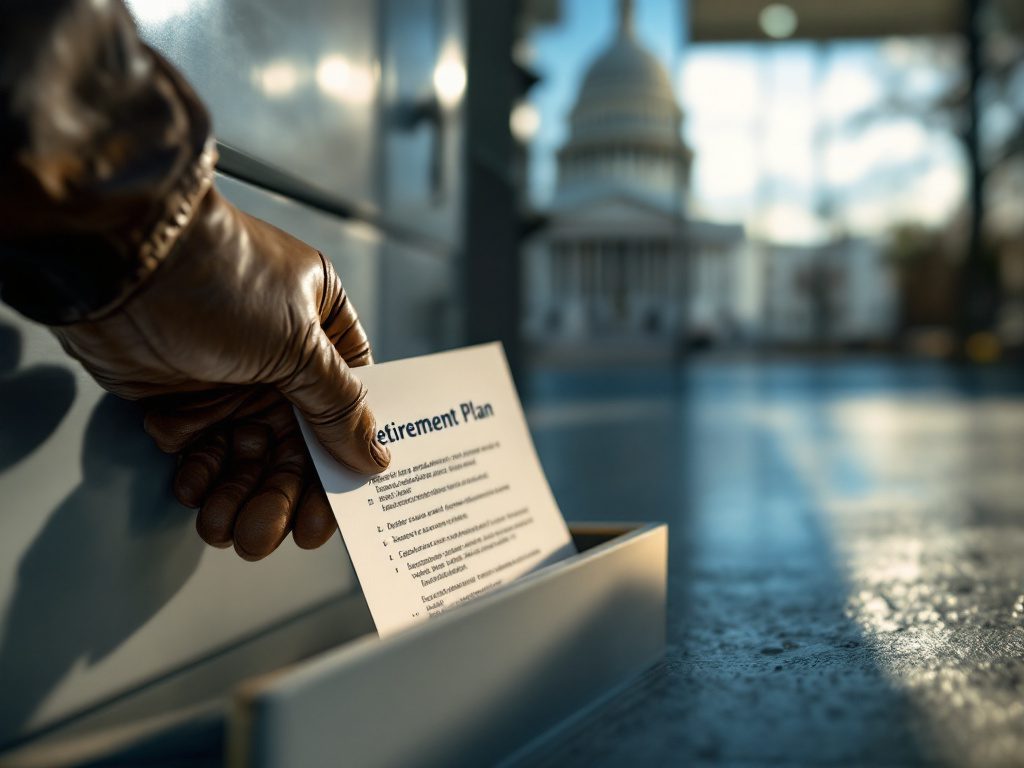Political Gamesmanship at the Expense of Federal Workers
After a marathon debate and a razor-thin 22-21 vote, the House Committee on Oversight and Accountability advanced a package of sweeping cuts to the federal and postal retirement system—totaling a staggering $50.9 billion siphoned from federal retirement security over ten years. Sparked by GOP lawmakers’ drive to demonstrate fiscal restraint, the package has been fiercely opposed by Democrats, employee unions, and even dissenting Republicans such as Michael R. Turner of Ohio, who dubbed the move “un-American” for targeting benefits mid-career. What does it mean when partisan brinkmanship redirects lifelong promises for public servants into bargaining chips for deficit hawks?
For decades, the federal workforce has been an easy target amid budget negotiations. Yet, as the Congressional Research Service notes, fewer than 2% of current federal employees earn six figures, and their retirement benefits are often less generous than their private-sector counterparts with similar tenure and education. The latest measures would force all federal employees hired before 2014 into the higher 4.4% FERS contribution tier, hike the pension calculation window to an employee’s highest five earning years, cut the early retirement annuity supplement, and create a new at-will employment track—trimming both security and take-home pay.
Who Really Pays for “Fiscal Responsibility”?
Chairman James Comer (R-KY) claims the changes are justified because of what he calls the “extensive benefits” federal workers receive—paid holidays, comprehensive insurance, student loan forgiveness, flexible leave, and workplace subsidies. But who are the real beneficiaries of this approach, and who is sacrificed on the altar of so-called fiscal prudence?
The ramifications of these changes extend far beyond the budget ledger. According to the National Active and Retired Federal Employees Association, the proposed cuts would reduce lifetime benefits for workers, especially those vested under previous promises. The pain doesn’t just hit paper pushers in Washington, but resonates among postal workers, VA nurses, Social Security clerks, and countless others—the backbone of essential government services. Erosion of their compensation structure risks driving away critical talent, a point union leaders have been shouting from the rooftops.
“I don’t know how we will get young people to ever work for us again after this and all the probationary firings.” — Daniel Horowitz, American Federation of Government Employees
Harvard labor economist Sandra Black argues, “Federal jobs have never carried the cachet of Wall Street or Silicon Valley, but have historically traded on job security and modest retirement. Strip away those incentives, and you undermine not just recruitment, but the very quality of government itself.” The evidence is compelling: Pew Research found that federal agencies already struggle to attract young talent, with government workers under age 30 now making up just 8% of the federal workforce, compared to 22% in the private sector.
The committee’s move amounts to an unnecessary squeeze on everyday workers at a time when inflation and uncertainty already threaten middle-class pocketbooks. The irony is as thick as molasses: The very lawmakers urging patriotic service are now sending a message that such service comes at a hefty, retroactive price.
Lessons from Abroad and the Road Ahead
Contrast Capitol Hill’s cost-cutting zeal with recent pension reform developments overseas. Just weeks ago, Saint Kitts and Nevis made headlines by passing landmark reforms to ensure fair, sustainable pensions for all public service workers, extending retirement security where it was once lacking. Prime Minister Dr. Terrance Drew’s rhetoric—describing the move as “a new chapter in social justice”—stands in stark relief against the U.S. proposal’s backward churn.
The divergence is instructive. While smaller governments are building stronger social contracts to foster loyalty and stability among their civil servants, U.S. conservatives are whittling away at commitments in the name of budget math and taxpayer resentment. Historical experience warns us where this leads. The near-ferocious backlash following the 1980s bipartisan Social Security changes was only quelled by grandfathering protections and a strong message of shared sacrifice—not by pushing the burden onto a single group of workers.
What is at stake isn’t simply dollars and cents, but a vision of government as employer-of-choice versus last resort. If prospective workers—especially young and diverse talent—no longer trust that a government job means predictable retirement and a decent middle-class life, who will keep the gears of our democracy turning? Who will operate the levers of justice, safety, and public health in an era of mounting crises?
This legislation, now marching to the broader House floor, stands as a litmus test: Will America double down on a race to the bottom, or honor those who keep its lights on and its promises intact? One can only hope a broader coalition recognizes that trimming retirement security is not just an accounting maneuver, but a direct assault on the dignity and dependability of our public institutions.

